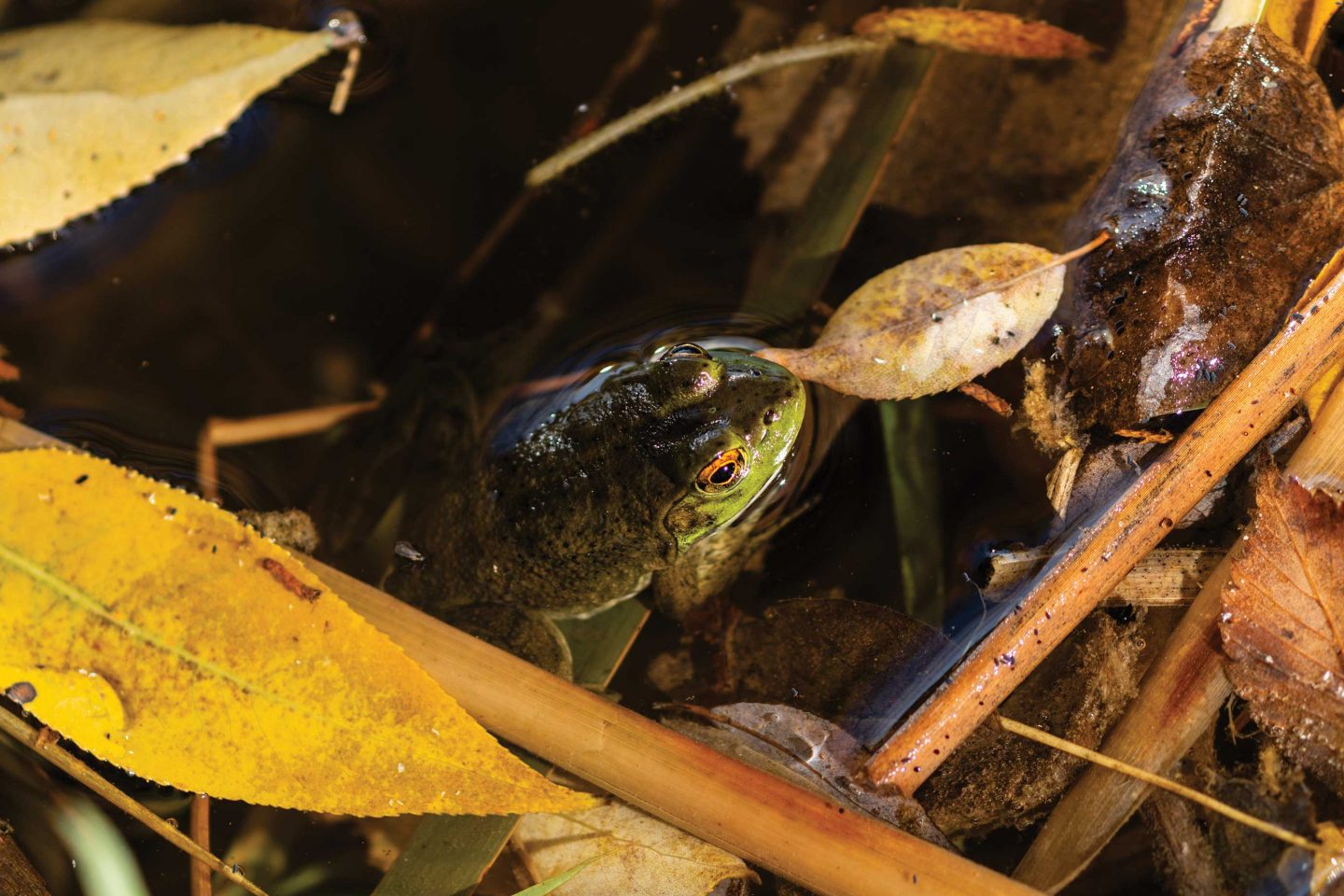
By Justin Haag
As October comes and goes, it’s time to say goodbye to many of the pond’s familiar residents of spring, summer and fall. One such character is the American bullfrog (Lithobates catesbeianus).
Unlike many of the pond’s bird species, the bullfrog isn’t going far, however. Neither is it “croaking,” in the sense of life or death. Rather, it is staying local to enter a sluggish period of dormancy called brumation.
As cooler weather arrives, bullfrogs retreat to the bottom of the pond and stay there, perhaps oblivious to the cold and snow above. Bullfrogs can absorb oxygen through their skin. As their heart and metabolic rates slow in the brumation process, they don’t require as much oxygen as they do during summer when expending energy to actively eat whatever bugs and animals they can fit into their mouths.
Not only is brumation vital to survival, but so is the frog’s heavy diet of late summer. Bullfrogs add glucose to their organs at this time, creating something of an antifreeze.
Although many assume bullfrogs burrow into the mud and litter at the bottom of the pond, they stay atop or not deep into it. Sometimes they’ll even move during winter months, albeit slowly, to seek water with more oxygen in it.
This process happens upwards to 10 times, considered the maximum lifespan for most bullfrogs in the wild. When the water temperature reaches about 60 degrees, we can welcome the bullfrog once again as it returns to the surface. Once there, it will resume its feeding frenzy and greet us — or, actually, a hoped-for mate — with its familiar croak.
